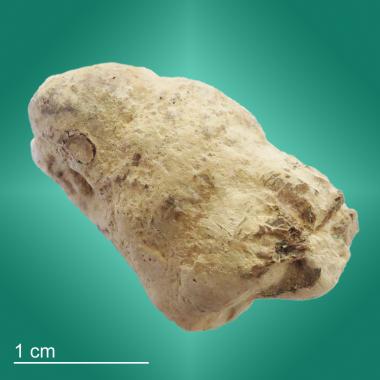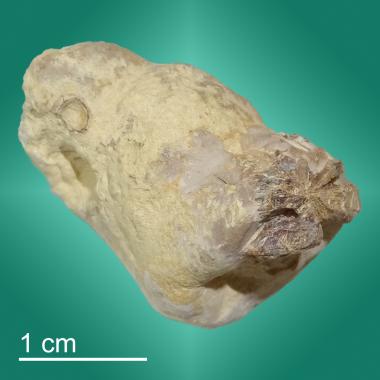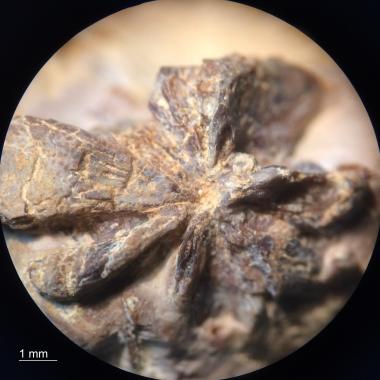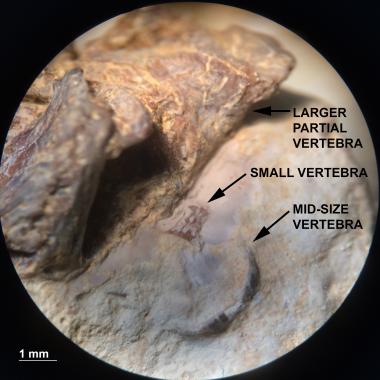



Here is a fun coprolite from the that was expelled by a creature that once swam in the Western Interior Seaway that covered the great plains of North America during the Cretaceous Period. You can see the edge of a fish vertebra peeking through on the top and an interesting bone partially exposed on the end (near the 1 cm mark).
After carefully removing the matrix (which in this case is fossilized poo) from the bone near the end, I found a larger partial vertebra that looked like at star. Normally the top of a fish vertebra is smooth and concave. In this case, that smooth surface appears to have been partially digested, leaving the interior structure. This vertebra is may be from a fish know as the "Barracuda of the Western Interior Sea" called Cimolichthys. Right below that larger partially digested vertebra, there were two smaller more complete vertebrae. The mid-size one is of similar size to the one you can see on the side of the coprolite in the first two photos. The other is less than half that size. This tells us that three different fish were eaten.
So here is the fun part. Let's travel back in time and try to imagine what life was like back then based on what we know.
First it is a beautiful day at sea. Fish of all sizes are swimming around doing their fishy business. They are distracted by the shadow of a pterosaur gliding above the water's surface. All of the sudden a large fish opens its jaws and sucks in the three little fishies in one big gulp. That is one possibility. Here is another fun one. Notice how the largest vertebra looks like it was being digested longer than the others. In fact, the smallest of all looks to be the most pristine. What if the little fish was being chased by medium sized fish, and just as the mediums sized fish gulped down the little fish, a bigger fish snatched up the medium size fish? Then perhaps that larger fish was gobbled by the even larger animal that made this poop! We will never know exactly what happened, but studying coprolites can give us clues as to what life was like in the prehistoric sea.
This coprolite was found by Ramo Decker.
